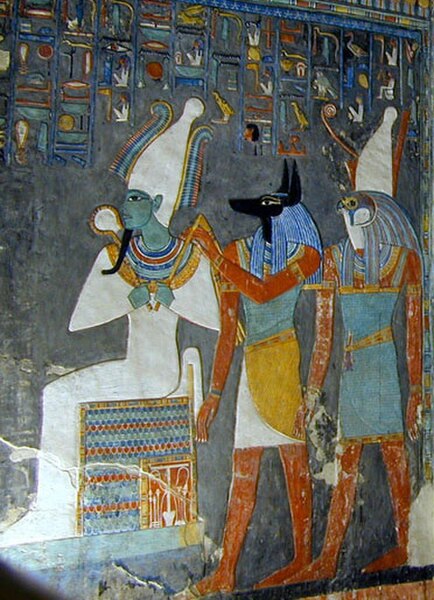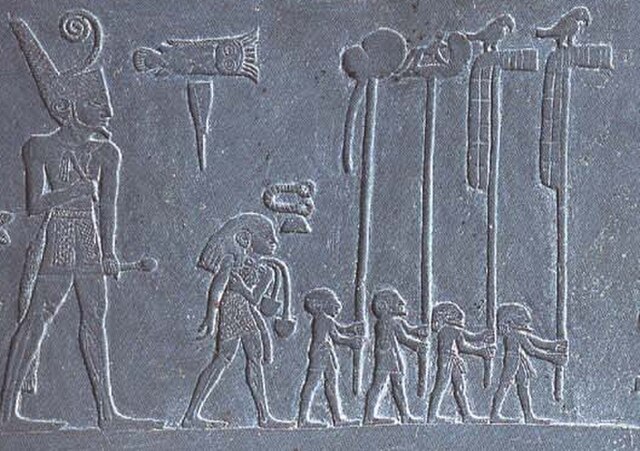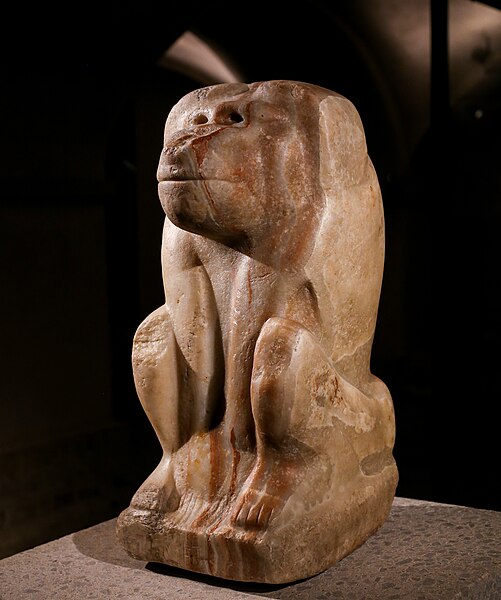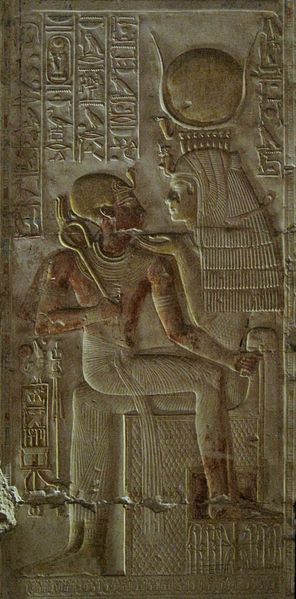Sobek was an ancient Egyptian deity with a complex and elastic history and nature. He is associated with the Nile crocodile or the West African crocodile and is represented either in its form or as a human with a crocodile head. Sobek was also associated with pharaonic power, fertility, and military prowess, but served additionally as a protective deity with apotropaic qualities, invoked especially for protection against the dangers presented by the Nile. Sobek has been famed for having been revered by the first female Pharaoh by the Nebty name Sat-Sekhem-Nebet-Tawy Sobekneferu, present both in the female Pharaoh's nomen, Sobekneferu, and her praenomen Kasobekre.
This statue of Sobek was found at Amenemhat III's mortuary temple (which was connected to his pyramid at Hawara in the Faiyum), serving as a testament to this king's devotion to Sobek. Ashmolean Museum, Oxford.
This Late Period (c. 400–250 BCE) statue shows Sobek bearing the falcon head of Re-Harakhti, illustrating the fusion of Sobek and Re into Sobek-Re. Walters Art Museum, Baltimore.
This relief from the Temple of Kom Ombo shows Sobek with typical attributes of kingship, including a was-sceptre and royal kilt. The ankh in his hand represents his role as an Osirian healer and his crown is a solar crown associated with one of the many forms of Ra.
This Roman period box shows a king making an offering to a solar form of Sobek. It is thought that this box could have been used in such offering rituals. Walters Art Museum, Baltimore.
Ancient Egyptian deities are the gods and goddesses worshipped in ancient Egypt. The beliefs and rituals surrounding these gods formed the core of ancient Egyptian religion, which emerged sometime in prehistory. Deities represented natural forces and phenomena, and the Egyptians supported and appeased them through offerings and rituals so that these forces would continue to function according to maat, or divine order. After the founding of the Egyptian state around 3100 BC, the authority to perform these tasks was controlled by the pharaoh, who claimed to be the gods' representative and managed the temples where the rituals were carried out.
The gods Osiris, Anubis, and Horus in the Tomb of Horemheb (KV57) in the Valley of the Kings
Narmer, a Predynastic ruler, accompanied by men carrying the standards of various local gods
Statue of the baboon god Hedj-Wer, inscribed with the name of king Narmer
Isis, a mother goddess and a patroness of kingship, holds Pharaoh Seti I in her lap.








